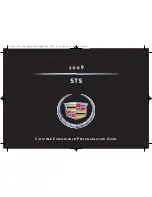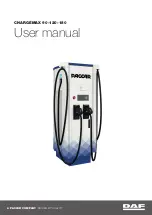
ENGINE
509
FACTS ABOUT ENGINE OIL
CONSUMPTION
Functions of engine oil
Engine oil has the primary function of lubricating and cooling
the inside of the engine, and plays a major role in maintaining
the engine in proper working order.
Engine oil consumption
It is normal that an engine should consume some engine
oil during normal engine operation. The causes of oil
consumption in a normal engine are as follows.
D
Oil is used to lubricate pistons, piston rings and cylinders.
A thin film of oil is left on the cylinder wall when a piston
moves downwards in the cylinder. High negative pressure
generated when the vehicle is decelerating sucks some of
this oil into the combustion chamber. This oil as well as
some part of the oil film left on the cylinder wall is burned by
the high temperature combustion gases during the
combustion process.
D
Oil is also used to lubricate the stems of the intake valves.
Some of this oil is sucked into the combustion chamber
together with the intake air and is burned along with the fuel.
High temperature exhaust gases also burn the oil used to
lubricate the exhaust valve stems.
The amount of engine oil consumed depends on the
viscosity of the oil, the quality of the oil and the way the
vehicle is driven.
More oil is consumed by high
−
speed driving and frequent
acceleration and deceleration.
A new engine consumes more oil, since its pistons, piston rings
and cylinder walls have not become conditioned.
Oil consumption:
Max. 1.0 L per 1000 km (1.1 qt./600 miles,
0.9 Imp. qt./600 miles)
When judging the amount of oil consumption, keep in
mind that the oil may have become diluted, making it
difficult to judge the true level accurately.
For example, if a vehicle is used for repeated short trips and
consumes a normal amount of oil, the dipstick may not show
any drop in the oil level at all, even after 1000 km (600 miles)
or more. This is because the oil is gradually becoming diluted
with fuel or moisture, making it appear that the oil level has not
changed.
The diluting ingredients evaporate out when the vehicle is then
driven at high speeds, as on an expressway, making it appear
that oil is excessively consumed after driving at high speeds.
Summary of Contents for GX470 2006
Page 14: ...HOW TO USE THIS MANUAL x I n f o r ma t i o nP r o v i d e db y ...
Page 25: ...PICTORIAL INDEX xxi I n f o r ma t i o nP r o v i d e db y ...
Page 71: ...SWITCHES 46 I n f o r ma t i o nP r o v i d e db y ...
Page 123: ...INTERIOR EQUIPMENT 98 I n f o r ma t i o nP r o v i d e db y ...
Page 225: ...OCCUPANT RESTRAINT SYSTEMS 200 I n f o r ma t i o nP r o v i d e db y ...
Page 237: ...STEERING WHEEL AND MIRRORS 212 I n f o r ma t i o nP r o v i d e db y ...
Page 241: ...AIR CONDITIONING 216 21PY024 Air flow selection I n f o r ma t i o nP r o v i d e db y ...
Page 255: ...AIR CONDITIONING 230 I n f o r ma t i o nP r o v i d e db y ...
Page 320: ...AUDIO 295 22PY056 I n f o r ma t i o nP r o v i d e db y ...
Page 365: ...AUDIO 340 I n f o r ma t i o nP r o v i d e db y ...
Page 421: ...STARTING AND DRIVING 396 I n f o r ma t i o nP r o v i d e db y ...
Page 449: ...DRIVING TIPS 424 I n f o r ma t i o nP r o v i d e db y ...
Page 507: ...IN CASE OF AN EMERGENCY 482 I n f o r ma t i o nP r o v i d e db y ...
Page 515: ...MAINTENANCE 490 I n f o r ma t i o nP r o v i d e db y ...
Page 525: ...INTRODUCTION 500 I n f o r ma t i o nP r o v i d e db y ...
Page 587: ...ELECTRICAL COMPONENTS 562 I n f o r ma t i o nP r o v i d e db y ...
Page 590: ...BODY 565 FUEL TANK Capacity 87 L 23 gal 19 1 Imp gal I n f o r ma t i o nP r o v i d e db y ...
Page 599: ...BODY 574 I n f o r ma t i o nP r o v i d e db y ...
















































